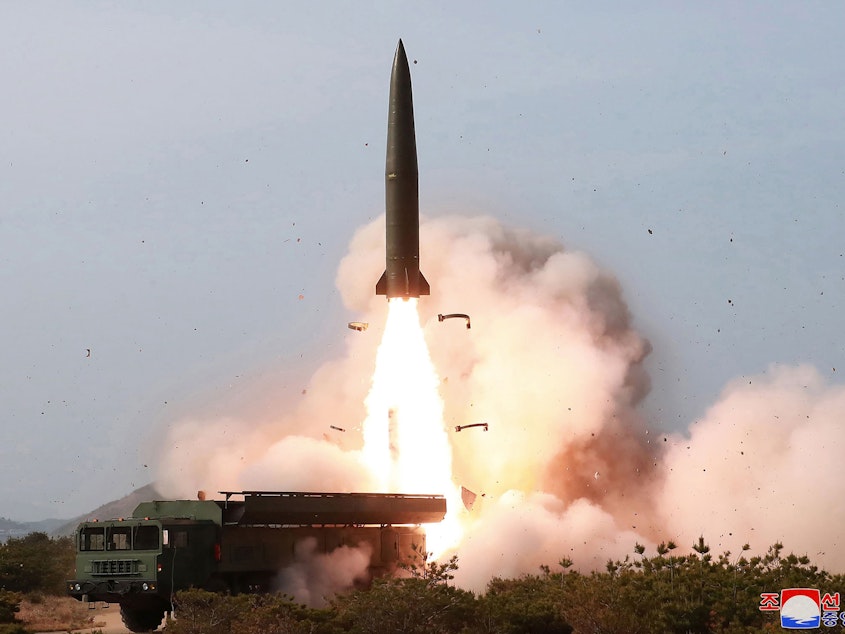North Korea's Network Of Prison Camps Funds Weapons Programs, Rights Group Says

North Korea is using forced labor from its network of prison camps to mine coal and other minerals to boost exports and earn foreign currency, using the cash to support its nuclear weapons programs, according to a South Korean human rights group.
A report by the Seoul-based Citizens' Alliance for North Korea Human Rights said an intricate network of government ministries and other entities relies on prison labor and other illicit operations to bring in money to the isolated Asian country.
Pyongyang continues to operate "a large financial pyramid fraud" relying on "mafia-type operations" to get people held in prisons camps to mine large quantities of coal, lead, zinc, magnesite and other materials, the report said.
Satellite images and testimony from witnesses shed light on North Korea's expansion of its prison camp network to overlap with the location of several mines, according to the report, which is titled "Blood Coal Export from North Korea: Pyramid scheme of earnings maintaining structures of power."
The country exports goods using "a shady network of foreign trading partners," in China, Myanmar, and Russia, who often receive North Korea's coal shipments produced by citizens in prisons, according to the report.
Sponsored
The findings provide a deep analysis of how prison camps help North Korea supports its military operations. The U.N. has banned commodity exports from the country in an attempt to stifle funding for the nation's missile programs and to stop human rights abuses from these camps.
The expansion of prison camps comes as North Korean leader Kim Jong Un's regime has worked to boost the nation's nuclear weapons programs.
President Biden's administration is still forming its policies toward North Korea, but it's likely to take a harder line than his predecessor. Former president Donald Trump held three summits with Kim that ultimately produced no denuclearization and hardly touched on the country's dismal human rights record.
According to Reuters, a State Department spokesperson said the Biden administration planned a new approach to North Korea, which will include a full review with allies "on ongoing pressure options and the potential for any future diplomacy."
Prison labor economics
Sponsored
Life inside these prison camps is brutal, according to the report and other accounts. Starvation, torture, beatings have all been reported as regular occurrences at these camps. Entire families, including children, are often tasked with working nearly every day to mine coal and other products.
The State Department has said the number of people held in the prison and detention system is estimated at 80,000 and 120,000. It said conditions "were harsh and life threatening due to food shortages, gross overcrowding, physical abuse, and inadequate sanitary conditions and medical care."
The total coal ore reserves in North Korea are estimated at 18.6 billion tons, and they're valued at more than $3.4 billion, the report stated. Coal shipments to China, Russia, Myanmar and Syria brought in around $200 million in 2017 alone. That should satisfy domestic demand, but there are still nationwide shortages, according to the report.
Despite previous reports that the prison camps were closing or downsizing, the report cited satellite images showing that Kim's regime has only ramped up mining operations.
One satellite image shows the shaft and open pit mines in Bukchang and Kaechon are clearly overlapping with the area encompassing major known political prison camps in North Korea. These camps have been in operation since the 1970s, when the country's system of political prison camps was expanded.
Sponsored
Newly expanded southern perimeters of the camp in Bukchang have been marked by new guard posts, and new buildings beyond the old boundaries of the camp. Witnesses have also observed more changes in some of the mine buildings. Recent satellite images show coal trains near coal loading stations, as well as larger cargo trains. [Copyright 2021 NPR]
